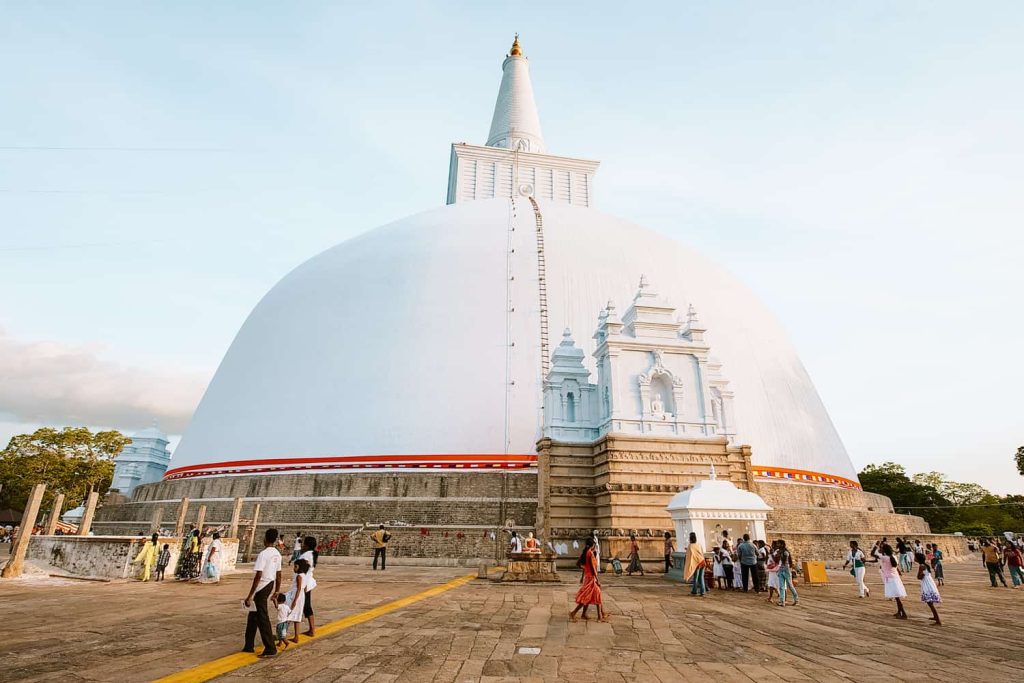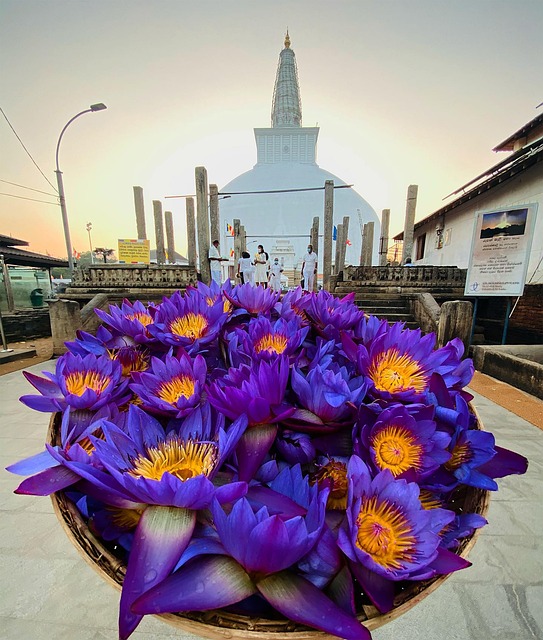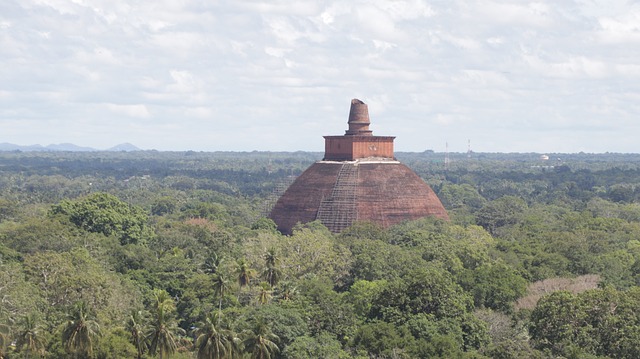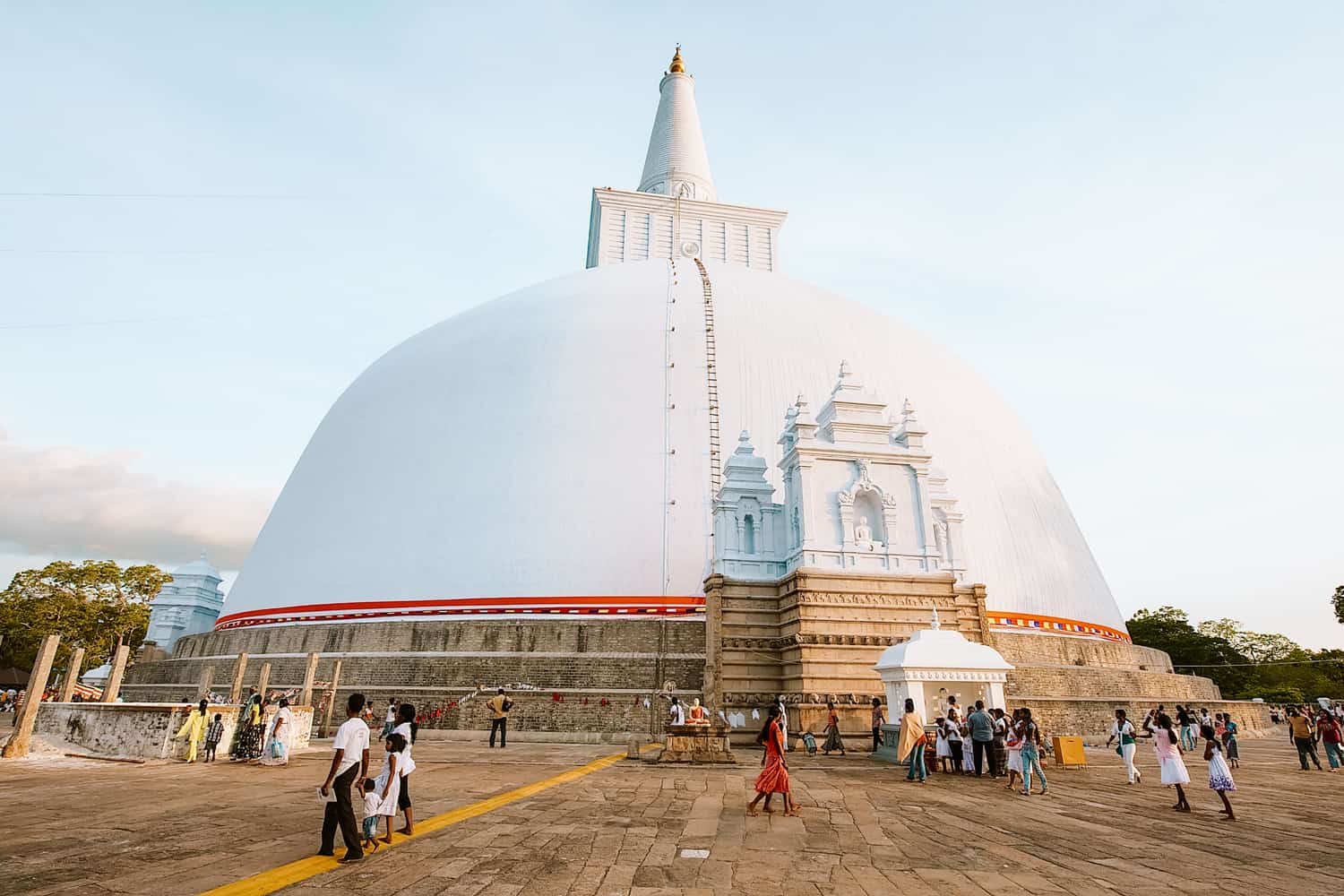Anuradhapura
In the heart of Sri Lanka, Anuradhapura stands as a living testament to the island’s rich history and cultural heritage. This ancient city, with its roots reaching back through centuries, holds a profound significance in the tapestry of Sri Lankan history and culture. As we embark on this exploration, let’s begin with an overview of Anuradhapura and unravel the layers of its importance in shaping the identity of this vibrant nation.
Overview of Anuradhapura:
Anuradhapura, once a flourishing capital, sprawls across the landscape as a testament to the resilience of time. Its ancient remnants, carefully preserved, offer a glimpse into the grandeur of a bygone era. From majestic stupas to intricate monasteries, Anuradhapura’s architectural marvels narrate stories etched in stone.
Significance in the History and Culture of Sri Lanka:
The historical footprint of Anuradhapura extends over a millennium, marking it as one of the oldest continuously inhabited cities in the world. As the first capital of ancient Sri Lanka, Anuradhapura played a pivotal role in shaping the nation’s destiny. Its significance is deeply intertwined with the spread of Buddhism, the evolution of governance, and the establishment of cultural traditions that endure to this day.
Teaser about Historical and Cultural Wonders:
Beyond the physical remnants of ancient structures, Anuradhapura holds intangible treasures that resonate with spiritual and cultural depth. The city’s sacred sites, including the venerated Sri Maha Bodhi, beckon pilgrims and history enthusiasts alike. The architectural wonders, such as the Jetavanaramaya Stupa and the Abhayagiri Monastery, invite contemplation on the advanced knowledge and craftsmanship of ancient civilizations.
Join us on a journey through time as we navigate the storied streets of Anuradhapura, where every brick, every carving, and every relic unfolds a narrative of a city that has stood witness to the ebb and flow of centuries.

Historical Background of Anuradhapura
As we delve into the historical roots of Anuradhapura, we uncover a narrative that spans over a millennium, shaping the city into a cradle of civilization, spirituality, and cultural evolution.
An Ancient Capital’s Role:
Anuradhapura served as the majestic capital of Sri Lanka for more than a thousand years, from around the 4th century BC to the 11th century AD. As the political, economic, and cultural epicenter of ancient Sri Lanka, Anuradhapura played a pivotal role in the island’s governance and societal development. It was during this time that the city witnessed the establishment of a sophisticated civilization, marked by advanced urban planning and monumental architecture.
UNESCO World Heritage Site Designation:
In acknowledgment of its profound historical significance, Anuradhapura was designated as a UNESCO World Heritage Site. This prestigious recognition underscores the city’s universal value and the importance of preserving its tangible and intangible cultural heritage for future generations. The UNESCO designation encompasses the plethora of ancient structures and remnants that narrate Anuradhapura’s unique story.
Contribution to the Development and Spread of Buddhism:
Anuradhapura holds a sacred place in the Buddhist world, as it played a pivotal role in the development and spread of Buddhism across Sri Lanka and beyond. The city became a bastion of Buddhist learning and practice, with monasteries such as the Abhayagiri Monastery serving as centers for intellectual and spiritual pursuits. The teachings and principles of Buddhism flourished in Anuradhapura, influencing not only the local culture but also reaching distant lands through trade and cultural exchange.
The historical background of Anuradhapura unveils a chapter in human history where a city thrived as a beacon of civilization and spirituality. In the following sections, we will explore the specific facets that make Anuradhapura an enduring symbol of Sri Lanka’s cultural and religious heritage.
The Sacred City and Sri Maha Bodhi
Within the ancient city of Anuradhapura, the sacredness is palpable, and at its heart lies the venerable Sri Maha Bodhi, a living testament to spirituality, pilgrimage, and unwavering devotion.
Importance of Sri Maha Bodhi:
Sri Maha Bodhi, the sacred fig tree (Ficus religiosa), holds unparalleled significance in the cultural and religious tapestry of Anuradhapura. Believed to be a sapling from the original Bodhi tree under which Siddhartha Gautama attained enlightenment, Sri Maha Bodhi is considered one of the oldest historically authenticated trees in the world. Its existence marks an unbroken lineage that traces back over two millennia, making it a living connection to the very roots of Buddhism.
Pilgrimage and Devotion:
For devout Buddhists, a pilgrimage to Anuradhapura is incomplete without paying homage to Sri Maha Bodhi. Pilgrims, both local and international, embark on spiritual journeys to this sacred site, seeking solace and enlightenment beneath the sheltering branches of the revered tree. The pilgrimage is not just a physical journey but a profound spiritual experience, fostering a sense of unity and reverence among those who gather in the presence of Sri Maha Bodhi.
The Living Symbol of Spirituality:
Sri Maha Bodhi stands as a living symbol of spirituality, embodying the core tenets of Buddhism – enlightenment, compassion, and interconnectedness. The tree’s resilience and perpetual greenery, despite the passage of centuries, mirror the enduring nature of Buddhist teachings. Its sacred aura radiates a sense of tranquility, inviting visitors to reflect on the profound wisdom encapsulated in the teachings of the Buddha.
As the sun sets over Anuradhapura, pilgrims and visitors alike gather around Sri Maha Bodhi, absorbing the serenity and spiritual energy that permeate the surroundings. In the subsequent sections, we will explore the architectural wonders and cultural gems that further enrich the sacred ambiance of this ancient city.

Architectural Marvels of Anuradhapura
Anuradhapura stands as a living museum of architectural marvels, where stupas, monasteries, and reservoirs weave a tapestry of ancient grandeur and advanced craftsmanship.
Stupas, Monasteries, and Reservoirs:
The city’s skyline is adorned with architectural wonders that reflect the sophisticated urban planning of ancient Anuradhapura. Majestic stupas rise like sentinels, monasteries stand as centers of spiritual contemplation, and vast reservoirs showcase the city’s mastery over hydraulic engineering. Together, these structures form a harmonious ensemble, each contributing to the city’s magnificence and cultural significance.
Jetavanaramaya Stupa and Ruwanwelisaya Stupa:
Among the many stupas that grace the landscape of Anuradhapura, the Jetavanaramaya Stupa and the Ruwanwelisaya Stupa stand as towering testaments to ancient architectural prowess.
Jetavanaramaya Stupa: Once the tallest stupa in the ancient world, the Jetavanaramaya Stupa is a colossal structure that dominates the cityscape. Its sheer size and intricate detailing showcase the engineering ingenuity of the ancient builders. Pilgrims and visitors are drawn to the stupa’s serene presence, offering a glimpse into the city’s historical and spiritual significance.
Ruwanwelisaya Stupa: Known for its immense dome and finely carved railings, the Ruwanwelisaya Stupa is another architectural gem in Anuradhapura. This stupa, built by King Dutugemunu, stands as a symbol of devotion and reverence. Pilgrims circumambulate the stupa, contributing to the sacred energy that permeates this iconic structure.
Advanced Architectural Prowess:
The architectural prowess displayed in Anuradhapura goes beyond the sheer size of the structures. It encompasses intricate carvings, precise construction techniques, and an understanding of aesthetics that transcends time. The city’s engineers and architects demonstrated an advanced understanding of materials, symmetry, and design principles, leaving behind a legacy that continues to inspire awe.
As we navigate the ancient streets of Anuradhapura, the architectural wonders unveil stories of a civilization that not only embraced the practical aspects of construction but also infused spirituality and cultural richness into every stone laid. In the following sections, we will unravel the intellectual and spiritual dimensions of Anuradhapura through its monastic centers and the teachings they nurtured.
Abhayagiri Monastery and Buddhist Learning
Within the ancient city of Anuradhapura, the Abhayagiri Monastery stands as a testament to the intellectual vibrancy and spiritual enlightenment that characterized this ancient capital.
Historical Importance of Abhayagiri Monastery:
Abhayagiri Monastery, founded in the 2nd century BC, holds profound historical significance in the cultural and religious narrative of Anuradhapura. Established by King Valagamba, this monastery became a center of Buddhist learning, attracting scholars, monks, and seekers of wisdom from far and wide. The sprawling complex comprised stupas, monastic buildings, and lecture halls, fostering an environment conducive to intellectual pursuits and spiritual reflection.
Anuradhapura as a Center for Buddhist Learning:
Anuradhapura, with its numerous monastic complexes, including Abhayagiri, emerged as a hub for Buddhist learning during its heyday. Monasteries served as sanctuaries for monks engaged in scholarly endeavors, scriptural studies, and the dissemination of Buddhist teachings. Anuradhapura became a revered destination for those seeking a deeper understanding of the Dhamma, fostering an atmosphere of intellectual exchange and spiritual growth.
Attraction for Scholars and Students:
Abhayagiri Monastery, with its commitment to academic excellence and spiritual exploration, became a magnet for scholars and students. Monks and intellectuals gathered at this center of learning, contributing to the city’s reputation as a beacon of wisdom in the ancient world. The monastery’s vast library housed sacred texts, manuscripts, and scholarly works, drawing inquisitive minds from across the subcontinent.
The Abhayagiri Monastery encapsulates the essence of Anuradhapura as a center for Buddhist learning, where the pursuit of knowledge and spiritual enlightenment intersected seamlessly. In the subsequent sections, we will explore the artistic and cultural treasures of Anuradhapura, shedding light on the city’s enduring legacy as a cradle of civilization and creativity.

Isurumuniya Temple and Rock Carvings
Nestled within the serene environs of Anuradhapura, the Isurumuniya Temple unveils a tranquil setting adorned with exquisite rock carvings, among which the iconic “Isurumuni Lovers” stands as a testament to artistic brilliance and spiritual symbolism.
Tranquil Setting of Isurumuniya Temple:
Isurumuniya Temple, situated on the banks of the Tissa Wewa reservoir, exudes a sense of tranquility and serenity. Surrounded by lush greenery and embraced by the gentle whispers of nature, the temple provides a retreat for contemplation and spiritual introspection. The proximity to the water enhances the peaceful ambiance, inviting visitors to immerse themselves in the timeless beauty of the surroundings.
Iconic “Isurumuni Lovers” Rock Carving:
One of the most celebrated features of Isurumuniya is the iconic rock carving known as the “Isurumuni Lovers.” This masterpiece, carved into a large granite slab, depicts a poignant scene of a couple in a loving embrace. The emotional depth captured in the carving resonates across time, evoking a range of sentiments from admiration to contemplation. The “Isurumuni Lovers” is not merely a representation of human affection; it is a timeless expression of love, artistry, and the intricacies of human relationships.
Artistic and Spiritual Significance:
The rock carvings at Isurumuniya Temple showcase the artistic prowess of ancient craftsmen, who skillfully translated cultural nuances into stone. The meticulous attention to detail, from the fluidity of the figures to the expressions etched on their faces, reflects a deep understanding of both artistic form and human emotion. Beyond the aesthetic appeal, these carvings hold spiritual significance, serving as visual metaphors for the interconnectedness of love, nature, and the divine.
As visitors wander through the tranquil grounds of Isurumuniya, they are not only greeted by artistic marvels but also invited to contemplate the profound meanings encapsulated in each carving. In the subsequent sections, we will unravel the spiritual significance of the Samadhi Statue and explore the enduring legacy of Anuradhapura as a cultural and historical treasure trove.
Samadhi Statue and Meditative Serenity
In the heart of Anuradhapura, the Samadhi Statue emerges as a sublime embodiment of meditative serenity, inviting visitors to witness a masterful creation that transcends the boundaries of time.
Description of the Samadhi Statue:
The Samadhi Statue, a majestic representation of the Buddha in meditation, stands as a captivating focal point within Anuradhapura. Carved from a single granite block, the statue radiates a serene aura that captivates all who behold it. The Buddha, seated in the lotus position with hands in the dhyana mudra, exudes a timeless tranquility that resonates through the ages.
Symbolism and Spiritual Significance:
Beyond its aesthetic allure, the Samadhi Statue carries profound symbolism and spiritual significance. The statue captures the essence of samadhi, a state of deep concentration and contemplation that leads to spiritual enlightenment. The meditative posture and serene expression of the Buddha convey a sense of inner peace and harmony, serving as a visual metaphor for the path to enlightenment and self-realization in Buddhist philosophy.
Inviting Visitors to Reflect on Tranquility:
As visitors stand in the presence of the Samadhi Statue, they are invited to reflect on the tranquility that emanates from this timeless work of art. The statue creates a sacred space where the hustle and bustle of the modern world fade away, leaving room for introspection and inner peace. The Samadhi Statue beckons visitors to embark on their journey of contemplation, offering a moment of respite and connection with the profound teachings of Buddhism.
In the subsequent sections, we will conclude our exploration of Anuradhapura by summarizing the allure of this ancient city, encouraging responsible exploration, and emphasizing the importance of preserving its cultural and historical treasures for future generations.

Modern Anuradhapura
As the sun sets on the ancient city of Anuradhapura, it gracefully transitions into the modern era, where the preservation of ancient treasures harmonizes with the pulse of contemporary life. This juxtaposition creates a unique and holistic experience that bridges the gap between the past and the present.
Preservation of Ancient Treasures:
Modern Anuradhapura stands as a custodian of ancient treasures, meticulously preserving the architectural marvels, sacred sites, and cultural gems that define the city’s rich history. Efforts in conservation and restoration ensure that the legacy of Anuradhapura remains intact, allowing present and future generations to connect with the roots of Sri Lanka‘s cultural and spiritual heritage.
Juxtaposition of Historical Marvels and Contemporary Life:
The streets of modern Anuradhapura bear witness to a seamless blending of historical marvels and contemporary life. Amidst ancient stupas and monasteries, bustling markets, vibrant communities, and modern infrastructure coexist. This juxtaposition offers visitors a dynamic experience, where the echoes of the past resonate in the vibrant tapestry of everyday life. Residents carry on age-old traditions, creating a living continuity that ties the present to its storied past.
Creating a Holistic Experience of Past and Present:
Modern Anuradhapura invites visitors to partake in a holistic experience that transcends temporal boundaries. Exploring the city becomes a journey through time, where the sacredness of ancient temples converges with the rhythm of contemporary existence. Whether strolling through the historical ruins or engaging with local communities, visitors encounter a rich tapestry that weaves together the threads of past and present, offering a profound understanding of Anuradhapura’s enduring legacy.
As we conclude our exploration of Anuradhapura, let this city be a living testament to the harmonious coexistence of history and modernity. By cherishing and respecting the past, Anuradhapura paves the way for a future where cultural and historical treasures continue to thrive, creating a legacy that transcends the boundaries of time.
Conclusion – Anuradhapura: A Legacy Preserved
As we stand amidst the ancient splendors of Anuradhapura, it becomes evident that this city is more than just a collection of ruins; it is a living legacy, a repository of stories, and a testament to the enduring spirit of a civilization that has weathered the sands of time.
Reflection on Anuradhapura as a Living Legacy:
Anuradhapura, with its stupas, monasteries, and timeless statues, breathes life into the pages of history. It is a living legacy that reverberates with the echoes of kings and scholars, monks, and artisans. The preservation of its architectural marvels and the continuation of sacred traditions ensure that Anuradhapura transcends the constraints of time, standing as a symbol of resilience and cultural richness.
The Role of Visitors in the Ongoing Story:
Visitors to Anuradhapura play a crucial role in the ongoing narrative of this ancient city. As we walk the pathways trodden by pilgrims and scholars of yesteryear, we become integral participants in the unfolding story. Our footsteps echo alongside those of ancient inhabitants, and our contemplation adds another layer to the collective consciousness that permeates the city.
Call to Cherish and Protect Cultural Heritage for Future Generations:
In the twilight of our exploration, let this be a fervent call to cherish and protect the cultural heritage of Anuradhapura for the generations yet to come. The responsibility falls on our shoulders to ensure that the sanctity of this living museum endures. Conservation, education, and a collective commitment to responsible tourism will safeguard the treasures of Anuradhapura, allowing its legacy to thrive and inspire future seekers of wisdom and beauty.
As we bid farewell to Anuradhapura, may the lessons learn within its sacred precincts echo in our hearts. May we carry forth the tales of this city’s grandeur, resilience, and spirituality, weaving them into the fabric of our own stories. Anuradhapura, with its legacy preserved, remains an eternal source of inspiration, beckoning all who encounter it to be guardians of the past for the sake of the future.




